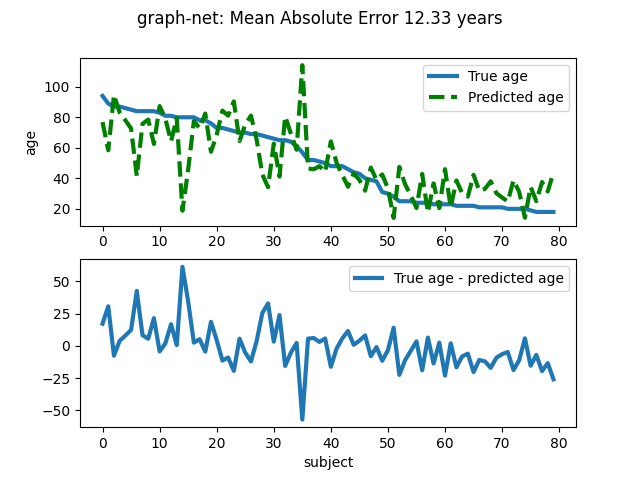SpaceNet: decoding with spatial structure for better maps#
The SpaceNet decoder#
nilearn.decoding.SpaceNetRegressor and nilearn.decoding.SpaceNetClassifier
implements spatial penalties which improve brain decoding power as well as decoder maps:
penalty=”tvl1”: priors inspired from TV (Total Variation) [Michel et al.1], TV-L1 [Baldassarre et al.2], [Gramfort et al.3].
penalty=”graph-net”: GraphNet prior [Grosenick et al.4].
These regularize classification and regression problems in brain imaging. The results are brain maps which are both sparse (i.e regression coefficients are zero everywhere, except at predictive voxels) and structured (blobby). The superiority of TV-L1 over methods without structured priors like the Lasso, SVM, ANOVA, Ridge, etc. for yielding more interpretable maps and improved prediction scores is now well established [Baldassarre et al.2], [Gramfort et al.3], [Grosenick et al.4].
Note that TV-L1 prior leads to a difficult optimization problem, and so can be slow to run. Under the hood, a few heuristics are used to make things a bit faster. These include:
Feature preprocessing, where an F-test is used to eliminate non-predictive voxels, thus reducing the size of the brain mask in a principled way.
Continuation is used along the regularization path, where the solution of the optimization problem for a given value of the regularization parameter alpha is used as initialization for the next regularization (smaller) value on the regularization grid.
Implementation: See [Dohmatob et al.5] and [Dohmatob et al.6] for technical details regarding the implementation of SpaceNet.
References#
- 1
Vincent Michel, Alexandre Gramfort, Gaël Varoquaux, Evelyn Eger, and Bertrand Thirion. Total variation regularization for fMRI-based prediction of behaviour. IEEE Transactions on Medical Imaging, 30(7):1328 – 1340, February 2011. URL: https://hal.inria.fr/inria-00563468, doi:10.1109/TMI.2011.2113378.
- 2(1,2)
Luca Baldassarre, Janaina Mourao-Miranda, and Massimiliano Pontil. Structured sparsity models for brain decoding from fmri data. In 2012 Second International Workshop on Pattern Recognition in NeuroImaging, volume, 5–8. 2012. URL: http://www0.cs.ucl.ac.uk/staff/M.Pontil/reading/neurosparse_prni.pdf, doi:10.1109/PRNI.2012.31.
- 3(1,2)
Alexandre Gramfort, Bertrand Thirion, and Gaël Varoquaux. Identifying predictive regions from fMRI with TV-L1 prior. In Pattern Recognition in Neuroimaging (PRNI). Philadelphia, United States, June 2013. IEEE. URL: https://hal.inria.fr/hal-00839984.
- 4(1,2)
Logan Grosenick, Brad Klingenberg, Kiefer Katovich, Brian Knutson, and Jonathan E. Taylor. Interpretable whole-brain prediction analysis with graphnet. NeuroImage, 72:304–321, 2013. URL: https://www.sciencedirect.com/science/article/pii/S1053811912012487, doi:https://doi.org/10.1016/j.neuroimage.2012.12.062.
- 5
Elvis Dohmatob, Michael Eickenberg, Bertrand Thirion, and Gaël Varoquaux. Speeding-up model-selection in GraphNet via early-stopping and univariate feature-screening. In PRNI. Stanford, United States, June 2015. URL: https://hal.inria.fr/hal-01147731.
- 6
Elvis Dohmatob, Alexandre Gramfort, Bertrand Thirion, and Gaël Varoquaux. Benchmarking solvers for TV-l1 least-squares and logistic regression in brain imaging. In PRNI 2014 - 4th International Workshop on Pattern Recognition in NeuroImaging. Tübingen, Germany, June 2014. IEEE. URL: https://hal.inria.fr/hal-00991743.
